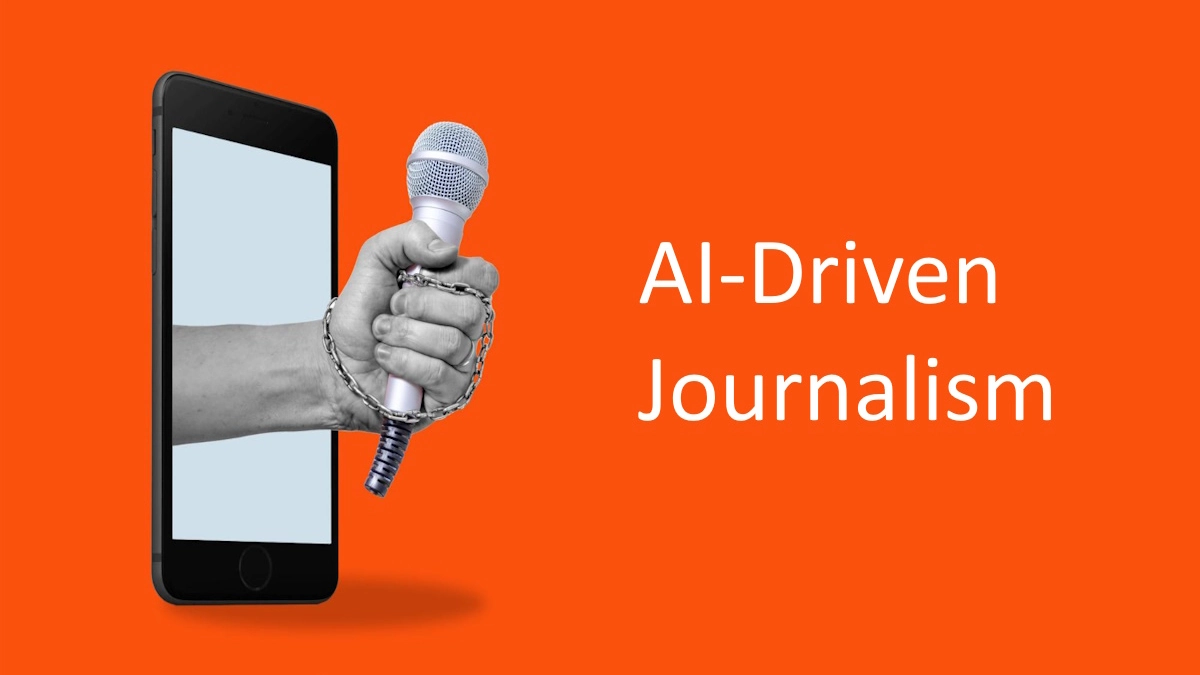Artificial intelligence is transforming industries worldwide, and journalism is no exception. As AI-powered tools become more sophisticated, they are increasingly being used to generate news stories, fact-check information, and analyze vast amounts of data. While this technological shift brings numerous advantages, it also raises a critical question—will AI-driven journalism eventually replace human reporters?
AI development has led to the creation of automated writing tools capable of producing news articles within seconds. Major news organizations are already using AI to streamline their operations, covering topics like financial reports, weather updates, and sports recaps. But can AI truly replace investigative journalism, in-depth storytelling, and ethical reporting?
To answer this, we need to explore how AI is changing journalism, its strengths and weaknesses, and the long-term impact of AI-driven content on the industry.
Table of Contents
How AI is Changing Journalism
AI is being integrated into journalism in several key ways. News organizations leverage AI to automate writing, improve research, and analyze public sentiment. Below are some of the most common ways AI is reshaping the industry.
1. Automated News Writing
AI-powered tools generate content by analyzing structured data and creating reports based on predefined templates. These tools are already being used by leading news outlets:
- The Associated Press uses Wordsmith, an AI tool that writes thousands of earnings reports for businesses.
- Bloomberg’s Cyborg processes financial data to create real-time reports.
- Reuters employs AI to generate short news articles and summaries.
Automated news writing ensures efficiency and speed, but it works best for formulaic reporting, such as stock market updates, weather forecasts, and sports results.
2. AI-Powered Fact-Checking
Misinformation is a growing concern, and AI is being used to combat it. AI-driven tools like Google’s Fact Check Explorer analyze multiple sources to verify the credibility of news content. By scanning vast amounts of text, AI can flag inconsistencies, detect manipulated media, and assess the reliability of information.
However, fact-checking is not foolproof. AI still struggles to understand context, sarcasm, or subtle biases that human journalists can detect.
3. Sentiment and Trend Analysis
AI can analyze social media discussions, public opinions, and emerging trends to help journalists identify newsworthy topics. By processing millions of tweets, comments, and articles, AI tools provide insights into what stories are gaining traction.
For example, IBM’s Watson and Crimson Hexagon analyze sentiment across platforms, helping journalists gauge public reactions to political events, product launches, and global issues.
4. Content Summarization and Personalization
With vast amounts of news content produced daily, AI assists in summarizing lengthy articles into digestible pieces. AI-powered tools like Summari and Primer generate concise summaries, making it easier for readers to consume information quickly.
Additionally, AI-driven algorithms personalize news feeds based on user preferences. Platforms like Google News and Apple News use AI to curate articles tailored to an individual’s reading habits.
5. AI-Generated Video and Audio Reports
Beyond text-based reporting, AI is being used to create video and audio content. Automated news anchors and text-to-speech technology allow AI-generated news reports to be broadcasted without human intervention. For instance, China’s Xinhua News Agency introduced an AI-powered news anchor capable of reading scripted news reports.
While these innovations improve efficiency, they lack the spontaneity and adaptability of human reporters during live coverage.
The Strengths and Limitations of AI in Journalism
AI-driven journalism offers numerous benefits, but it also has notable weaknesses. Understanding both helps determine AI’s role in the future of news reporting.
Strengths of AI in Journalism
- Speed and Efficiency – AI can generate reports in seconds, significantly reducing the time needed for routine news updates.
- Cost-Effective – Automating tasks lowers operational costs, enabling newsrooms to cover more stories with fewer resources.
- Unbiased Reporting – AI presents factual information without personal biases, which can help reduce subjective influences in news coverage.
- 24/7 Availability – AI-powered news bots can continuously produce content, ensuring constant updates.
- Data-Driven Insights – AI can process vast amounts of information to identify patterns, trends, and correlations that may be missed by human journalists.
Limitations of AI in Journalism
- Lack of Context and Nuance – AI struggles to interpret the deeper meaning behind events, missing the human and cultural elements of a story.
- Absence of Investigative Journalism – AI cannot conduct in-depth research, ask probing questions, or challenge sources.
- Dependence on Structured Data – AI works best with structured information, making it unsuitable for covering breaking news events that require real-time human assessment.
- Risk of Misinformation – If AI is trained on biased or false data, it can inadvertently spread misinformation.
- Ethical Concerns – The use of AI in journalism raises questions about transparency, accountability, and the authenticity of AI-generated content.
Despite its limitations, AI is advancing rapidly. This leads to the pressing question—will AI replace human journalists?
Will AI Replace Human Journalists?
The short answer is no—AI will not fully replace human reporters. Instead, AI will become a tool that enhances journalistic work rather than eliminating it.
Why Human Journalists Remain Essential
- Investigative Reporting – Journalism is more than just reporting facts; it involves uncovering hidden truths. AI lacks the intuition and persistence required for investigative journalism.
- Emotional and Ethical Storytelling – News stories often involve human experiences, emotions, and ethical considerations that AI cannot capture or interpret meaningfully.
- Adaptability in Live Reporting – AI struggles with real-time decision-making, while human reporters can adapt to changing situations, ask spontaneous questions, and challenge sources.
- Interviewing and Interpretation – AI cannot conduct face-to-face interviews, understand body language, or engage in meaningful discussions with sources.
- Maintaining Credibility and Trust – Readers value transparency and credibility. Knowing that a human journalist has verified and written a story fosters trust, something AI-generated content lacks.
Rather than replacing human journalists, AI will assist them in processing information faster and producing more accurate reports.
The Future of AI-Driven Journalism
The future of journalism will likely involve a collaboration between AI and human expertise. Here’s what we can expect:
- Hybrid Newsrooms – AI will handle routine reporting, while journalists focus on analysis, storytelling, and investigative pieces.
- AI-Assisted Research – AI will help journalists sift through massive datasets, finding relevant information quickly.
- Personalized News Delivery – AI-driven recommendations will provide readers with news tailored to their interests.
- Ethical Considerations – As AI-generated news becomes more common, transparency and accountability in journalism will become increasingly important.
AI is changing journalism, but human creativity, critical thinking, and ethical decision-making remain irreplaceable.
Final Thoughts
AI development in journalism is not about replacing reporters—it’s about transforming how news is produced and consumed. While AI can improve efficiency and automate routine tasks, it cannot replace the depth, insight, and human connection that journalism requires.
The future of journalism lies in a balance between AI-driven tools and human expertise. AI will support journalists by handling repetitive tasks, allowing them to focus on investigative reporting, ethical journalism, and storytelling. Rather than seeing AI as a threat, journalists and news organizations should embrace it as a tool that enhances their work.
Author Bio:- I am a Business Growth Strategist at a Leading Software Development Company. Apart from working on a long-lasting relationship with customers and boosting business revenue, I am also interested in sharing my knowledge on various technologies through successful blog posts and article writing.




